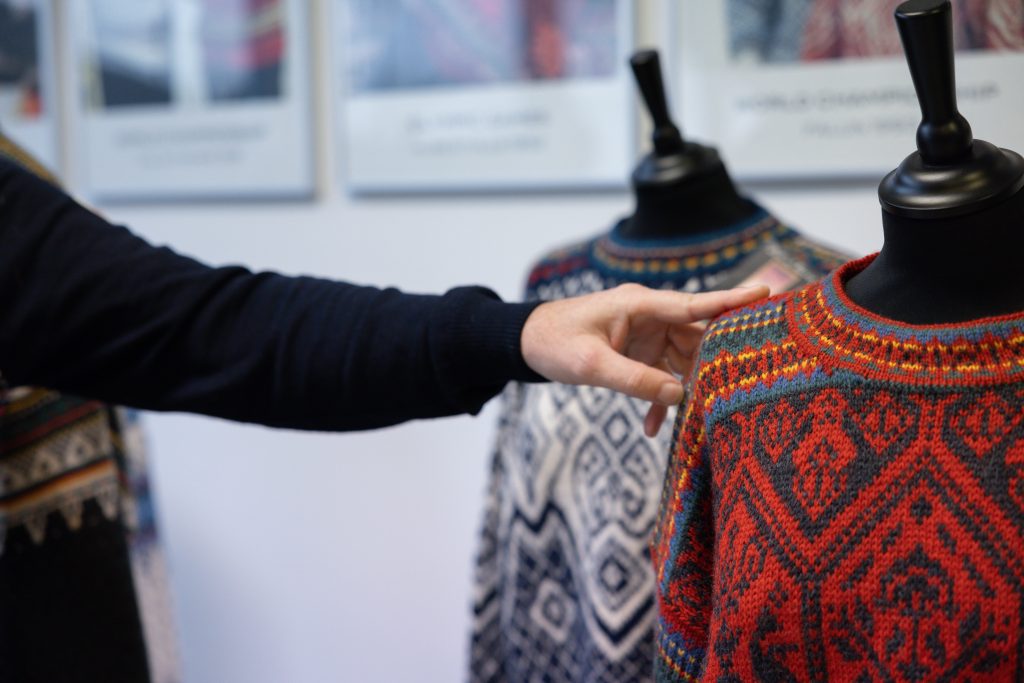Many fashion connoisseurs love wool’s softness, durability, and versatility. But for eco-conscious shoppers, none of these benefits matter if the fabric harms Mother Nature. So, green consumers must learn wool clothing’s ecological ups and downs.
But just how environmentally friendly is wool? Find out in this article:
Benefits of Slow Fashion
Each year, millions of tons of clothing saturate landfills. These massive piles produce greenhouse gasses and toxins harmful to local ecosystems.
To combat this problem, shoppers have flocked to the clothing world’s latest trend, slow fashion. It prioritizes buying a timeless, long-lasting wardrobe instead of constantly cycling in new items.
Wool transcends cultural and time restrictions. The oldest discovered sweater is a 1700-year-old wool top found in a Norwegian glacier. And today, ethnic populations from Chile to Siberia use the fabric as their primary clothing source. So, shoppers who pick timeless designs can wear their wool clothing anytime, anywhere.
All Season Clothing
Wool’s moisture absorption makes it a fantastic temperature regulator. The fabric sucks in perspiration, leaving a gap of dry air between the body and the clothing. In wet climates, wool absorbs humidity, creating an arid interior. So, wool lovers can buy an all-season wardrobe that eliminates weather-driven shopping sprees.
Wool resists wear from reuse thanks to its elasticity. Critics have emphasized the fabric’s tendency to pill and unravel. But by learning how to clean clothing with care, wearers can maintain a wool garment for decades. Wool’s longevity is environmentally friendly.
Biodegradable Fabric
The longer it takes clothing to degrade, the longer it can sully the environment. As an animal-based product, wool draws the attention of nutrient-seeking organisms. These organisms exist in diverse habitats and can decompose the fabric within three months.
When wool degrades, it releases carbon and nutrients into the soil, creating rich bedding for plant life. Thanks to these properties, some gardeners use the fiber as an eco-friendly compost.
Sheep Methane Emissions
Sheep emit methane, a greenhouse gas that contributes to climate change. Some eco-conscious ranchers are combating this problem by planting Co2-absorbing trees. Norway’s rich, forest-friendly soil makes it the perfect place for ranchers to grow trees.
Cotton vs Wool
When questioning wool’s environmental impact, green shoppers should compare fleece production to other natural fibers. Plant-based renewable fabrics like cotton use far less land than sheep. A bale of wool requires roughly 367 times the amount of land as a comparably-sized cotton bale.
Norwegian farmers help mitigate this discrepancy by keeping their sheep connected to the ecosystem. Instead of carving vast natural swaths into pastureland, Norway’s farmers try to run their herds over an undisturbed environment.
It takes roughly 500,000 liters of water to produce a metric ton of wool. Considering the average shirt weighs less than a pound, this ton could create two thousand shirts, translating to 250 liters per shirt. By contrast, cotton requires 2500 liters of water to produce a single shirt.
Cotton also consumes more nitrous oxide-emitting fertilizers. While sheep ranches typically use significant amounts of pesticide, the details vary by location. Norwegian wool has the advantage of a cool climate that kills many harmful insects, reducing the need for pesticides.
Self Cleaning Fabric
Clothing that cycles through the washer and dryer each week consumes considerable water and energy. And synthetic fabrics shed plastic particles down the washer drain, polluting the ecosystem.
Thankfully, wool is self-cleaning. Wool fibers are made of keratin, a protein that kills foul-smelling bacteria. And when the fibers absorb water, they rub against each other, helping remove stains and dirt. So, wearers can keep their wool garments out of the wash while looking and smelling fresh.
Also, since wool is biodegradable on land and water, shedding wool fibers down the drain is acceptable.
For those looking to start their wool collection, Norwegian brands like Rauma and Dale of Norway have you covered. Our spring wool sweaters have timeless Norwegian designs that fit any occasion. And we source our wool from ethical, local pastures.
Key Takeaways
- Wool is environmentally friendly since it contributes to slow fashion.
- Wool is adaptable, meaning wearers won’t constantly need new garments.
- Wool biodegrades rapidly in both soil and water.
- Wool producers plant trees to combat sheep methane emissions.
- Wool requires few cleanings, reducing energy and water costs.
- Wool needs more land but less water and fertilizer than cotton.






